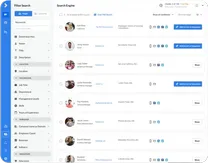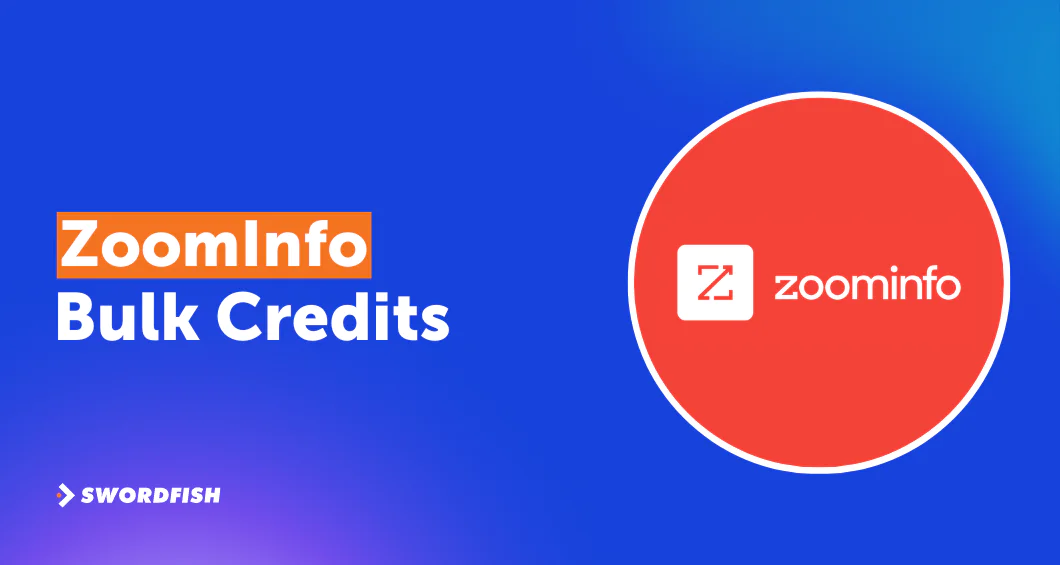
According to ZoomInfo, you can purchase bulk credits in quantities like 2,000 credits for accessing detailed business data. This bulk credit model offers cost savings and flexibility to handle fluctuating data needs efficiently.
However, it also requires upfront investment and careful planning to maximize the value, or you’ll be wasting unused credits.
While the bulk credit system seems advantageous, there are potential limitations, such as the risk of frequently overestimating data requirements or the inability to adjust plans.
In this ZoomInfo bulk credits analysis, we’ll discuss the intricacies of ZoomInfo’s unique credit model, explain how it works, compare it with monthly credits, and evaluate whether it’s the right choice for your business.
What is ZoomInfo Bulk Credits?
ZoomInfo Bulk Credits is a credit model that offers a way to buy credits in large quantities for accessing detailed business information. These credits are used to view or download data from ZoomInfo’s database.
Typically, buying in bulk offers cost savings compared to purchasing smaller amounts.
ZoomInfo Bulk Credits are designed for situations where you need access to a significant amount of data, such as for developing sales strategies or executing marketing campaigns.
You can acquire these credits directly from ZoomInfo, typically as part of specific subscription plans.
Credit Allocation and Expiration
Here is how the credit allocation works –
- Monthly Credits: You’ll receive a set number of credits each month (e.g., 1,000 credits), which are used first for any data export or viewing actions. With additional features, these credits reset at the start of each billing cycle, with unused credits not rolling over to the next period.
- Bulk Credits: In addition to monthly credits, you can purchase bulk credits (e.g., 2,000 credits) that do not expire monthly. These credits are used after the monthly credits have been depleted, offering a buffer for heavier usage periods.
- Views vs. Exports: You’ll get a separate quota for viewing contact information (e.g., 2,000 views), allowing them to explore and unlock details within the platform without exporting data. This feature supports preliminary research and decision-making without consuming export credits.
What Reddit Says About ZoomInfo’s Bulk Credit Model
To understand the impact of ZoomInfo’s bulk credit model on users, we delved into real reviews on Reddit. Here’s a summary of the discussions we found, highlighting how this system benefits or restricts users –
- One Reddit user shared that they were quoted $17,500 for 2,500 contacts, indicating a higher cost than anticipated but with additional features. There’s a potential expense associated with bulk credits for accessing large volumes of data, for instance, wasted credits.
- Another Reddit user revealed that they negotiated down to 1,600 credits for $1,800, originally quoted for 1,000 credits at the same price. They mentioned that it’s possible to get more value from bulk credit purchases.
- A few also expressed confusion about managing bulk credits, especially when integrating exported contacts into Salesforce. This highlights a challenge in utilizing bulk credits efficiently for specific operational needs.
Advantages of Using Bulk Credits
Bulk credits offer advantages, including cost savings, flexibility in data access, better scalability for business operations, and efficient credit management. These benefits make bulk credits an attractive option for businesses with more data needs.
Here are the benefits you can use with ZoomInfo’s Bulk Credit model –
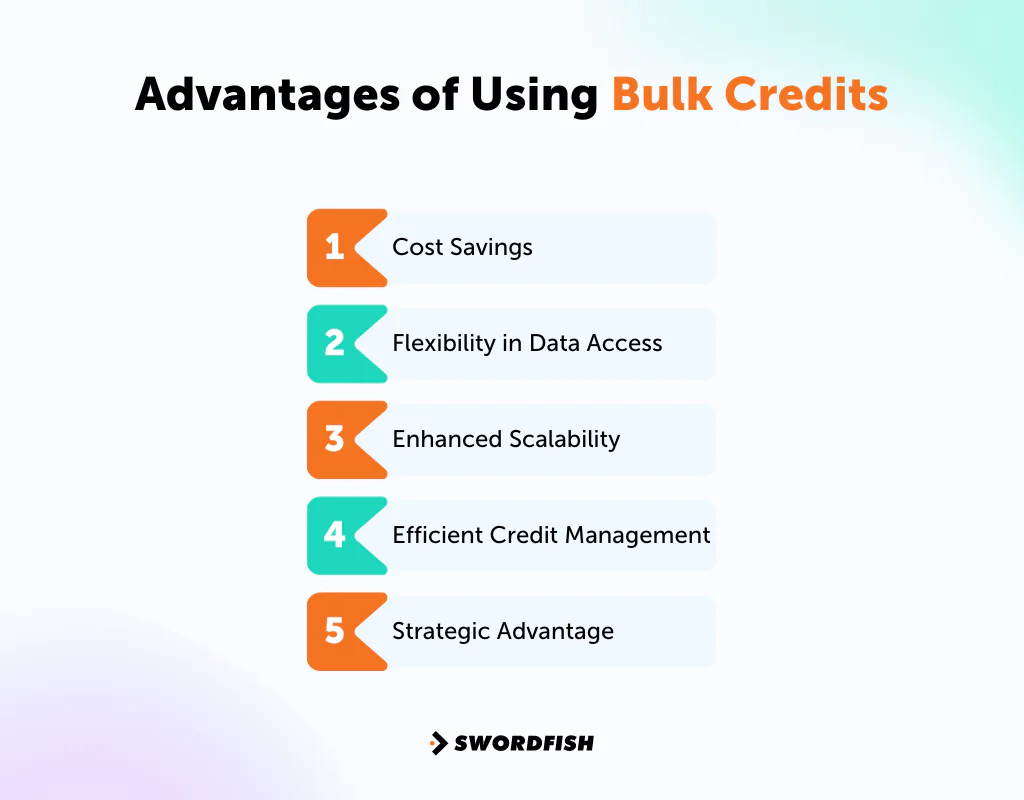
Cost Savings
Buying credits in bulk typically comes with a discount, reducing the overall cost per credit. This means you can access more data, more email addresses for a lower price, making it an economical choice for businesses planning large-scale research or sales lead generation campaigns.
Flexibility in Data Access
With bulk credits, you have the freedom to access a wide range of data without worrying about quickly depleting your credits. This flexibility allows marketing teams to adapt your data acquisition strategy as your business needs evolve, so you always have the necessary information at hand.
Enhanced Scalability
As your business grows, so do your data needs. Bulk credits support this growth by providing a scalable solution that can easily adjust to increased demands for information, helping you maintain momentum without interruption.
Efficient Credit Management
ZoomInfo’s platform offers tools to track and manage your bulk credit usage effectively. This makes sure that you’re always aware of your remaining credits, helping you plan your data access strategy more efficiently and avoid unexpected shortages.
Strategic Advantage
Having access to a large volume of data at your fingertips gives you a strategic advantage over competitors. It lets you make informed decisions quickly and identify opportunities faster.
More importantly, it lets you customize your marketing or sales strategies based on comprehensive data.
How Do ZoomInfo Credits Work?
ZoomInfo credits are a system for accessing the platform’s database of business information. Each action, like viewing contact details or downloading data, costs a certain number of credits.
Here’s how this model works, broken down into key components –

Credit Allocation
When you subscribe to one of the ZoomInfo pricing plans, you’re allocated a specific number of credits based on your subscription plan. These credits are what you spend to access data within ZoomInfo. The allocation can be on a monthly basis or as a bulk purchase, depending on your chosen plan.
Monthly Credits
Monthly credits are part of subscription plans that renew each month. The number of credits you get depends on your plan level. These credits reset at the start of each billing cycle, meaning any unused credits from the previous month do not roll over.
Bulk Credits
Bulk credits are purchased in large quantities at once and can be used at any time. Unlike monthly credits, they don’t expire at the end of each month, offering more flexibility for when and how you use them. This option is ideal for projects with variable data needs or users who prefer not to worry about monthly limits.
Credit Usage
Credits are consumed when you perform actions like exporting data or viewing detailed contact information. The cost in credits for each action varies, with more in-depth information typically requiring more credits. This system allows you to tailor your data consumption to your specific needs and budget.
Tracking and Management
ZoomInfo provides tools for tracking your credit usage, helping you monitor how many credits you’ve spent and how many you have left. Effective management of your credits ensures you maximize the value of your subscription, avoiding running out of credits unexpectedly and making informed decisions about future data needs.
Renewal and Top-Up
If you run out of credits, you have the option to purchase more or wait for your monthly credits to renew, depending on your plan. For bulk credit users, additional credits can be bought at any time to supplement their existing allocation.
ZoomInfo Bulk Credits vs. Monthly Credits
ZoomInfo’s bulk and monthly credits differ mainly in expiration, cost-effectiveness, flexibility, and management requirements. Bulk credits offer long-term savings and adaptability for fluctuating needs, while monthly credits suit consistent usage with simpler budgeting.
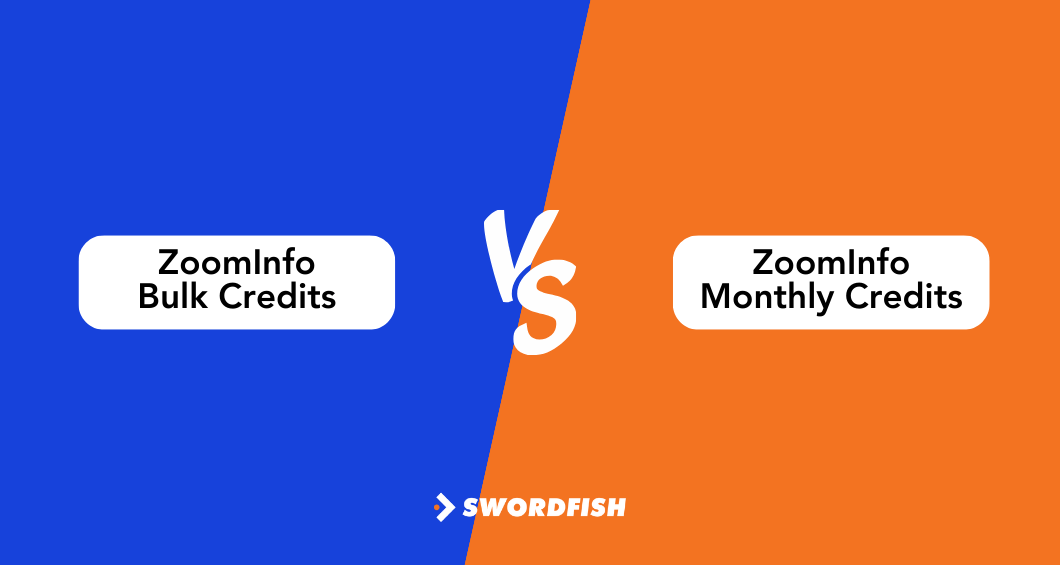
Let’s take a closer look at each aspect to understand their benefits and limitations-
Basic Features
First let’s cover the basics of what each credit model offers
-
Bulk Credits
Allocation: In addition to monthly credits, you’ll have access to 2,000 bulk credits.
Flexibility: Unlike monthly credits, bulk credits offer more flexibility. They can be adjusted, presumably to fit your needs over time.
Usage After Monthly Credits: Bulk credits come into play after the monthly credits have been fully utilized, providing a secondary resource for data access
-
Monthly Credits
Allocation: Each user receives 1,000 monthly credits for prospecting purposes.
Usage: These credits are used whenever you’ll export contact or company information from ZoomInfo.
Reset Cycle: Monthly credits reset on the first day of each month, ensuring you start fresh with a new allotment of 1,000 credits.
Export Mechanics: When exporting data, the system automatically utilizes monthly credits first. Only once all 1,000 monthly credits are used can bulk credits be tapped into.
Expiration
Understanding the expiration of credits is important in a credit model because it directly impacts how long you can use your credits.
-
Bulk Credits
Bulk credits do not expire monthly, offering flexibility for users who don’t need to access data every month. This feature is particularly beneficial for projects with fluctuating data needs, allowing credits to be used as required without the pressure of a looming expiration date.
-
Monthly Credits
Monthly credits reset at the beginning of each billing cycle. This system suits users with consistent monthly data needs but can be a drawback for those who fail to use all their credits within the month, as unused credits do not roll over to the next period.
Cost-Effectiveness
Cost-effectiveness is essential for making sure that you can access the necessary data without overspending, making your operations more budget-friendly.
-
Bulk Credits
Purchasing credits in bulk usually comes with a discount, making it a cost-effective option for heavy users. The upfront cost is higher, but the per-credit cost is lower compared to monthly credits, offering noteworthy savings over time.
-
Monthly Credits
Monthly credits may have a higher cost per credit but require a lower upfront investment. This model can be more manageable for small businesses or individuals with limited budgets, even though it might not offer the same level of savings as bulk purchases.
Flexibility and Scalability
Flexibility in a credit model is important because it allows you to adapt to varying data needs without being constrained by rigid limits.
-
Bulk Credits
The bulk credit model provides great flexibility, allowing you to scale your data access up or down based on project requirements without worrying about monthly limits. This can be especially advantageous for businesses with seasonal data needs.
-
Monthly Credits
Monthly credits offer less flexibility in terms of scaling, as you’re limited to a fixed number of credits each month. However, this model can encourage regular data access and help in budgeting for consistent monthly expenses.
Planning and Management
Effective planning involves strategizing on how to allocate your credits across different projects and time frames to meet your data needs without shortfall or excess.
-
Bulk Credits
Managing bulk credits requires careful planning. They are used effectively before any potential expiration date, which could be set for a year or more after purchase. This necessitates strategic planning to maximize the investment.
-
Monthly Credits
Monthly credits simplify planning, as you have a clear idea of how many credits you have to use each month. This can make it easier to manage for users with predictable data needs, though it may limit spontaneity in data access.
Comparison Table: Bulk Credits vs. Monthly Credits
|
Feature |
Bulk Credits |
Monthly Credits |
|
Expiration |
Do not expire monthly | Reset each month |
| Cost-Effectiveness | More cost-effective with lower per-credit cost |
Higher per-credit cost but lower upfront investment |
|
Flexibility and Scalability |
High flexibility for variable data needs | Less flexibility, suited for consistent data needs |
| Planning and Management | Requires strategic long-term planning |
Easier to manage with a clear monthly allocation |
Bulk vs Monthly Credits: Which One Should You Choose?
Choosing the right ZoomInfo credit model hinges on your data usage patterns and budgeting preferences. Here’s a breakdown to help you decide:
Bulk Credits
Bulk credits offer the advantage of not expiring monthly, giving you the freedom to use them as your projects demand without the worry of losing unused credits at the end of each month
If your data needs are compelling but irregular, bulk credits are likely the better choice. This option is ideal if –
- You engage in large-scale projects that require a lot of data sporadically throughout the year.
- Your data needs fluctuate greatly, with some months requiring heavy data usage and others very little.
- You prefer to make a one-time investment and enjoy cost savings over time, rather than committing to a fixed monthly expense.
Monthly Credits
Monthly credits let you have a steady stream of data access each month but require careful planning to ensure all credits are utilized, as they do not roll over to the next month.
Monthly credits are best suited for you if –
- Your data consumption is consistent, with similar amounts of data needed each month.
- You prefer predictable monthly expenses that can be easily budgeted for.
- You’re a smaller business or startup with more limited or predictable data needs that won’t benefit from the bulk discount.
Final Verdict
In summary, if your data usage is project-based or highly variable, bulk credits can provide both flexibility and cost savings. However, if your data needs are steady and predictable, monthly credits offer simplicity and budgeting ease.
Bulk Credit Limitations
While the bulk credit model offers significant advantages, especially for users with large, irregular data needs. It’s important to weigh these factors against the benefits to determine if bulk credits are the right choice for your data access needs.
Proper planning and usage monitoring can mitigate some of these drawbacks, allowing you to take full advantage of the cost savings and flexibility that bulk credits can offer.
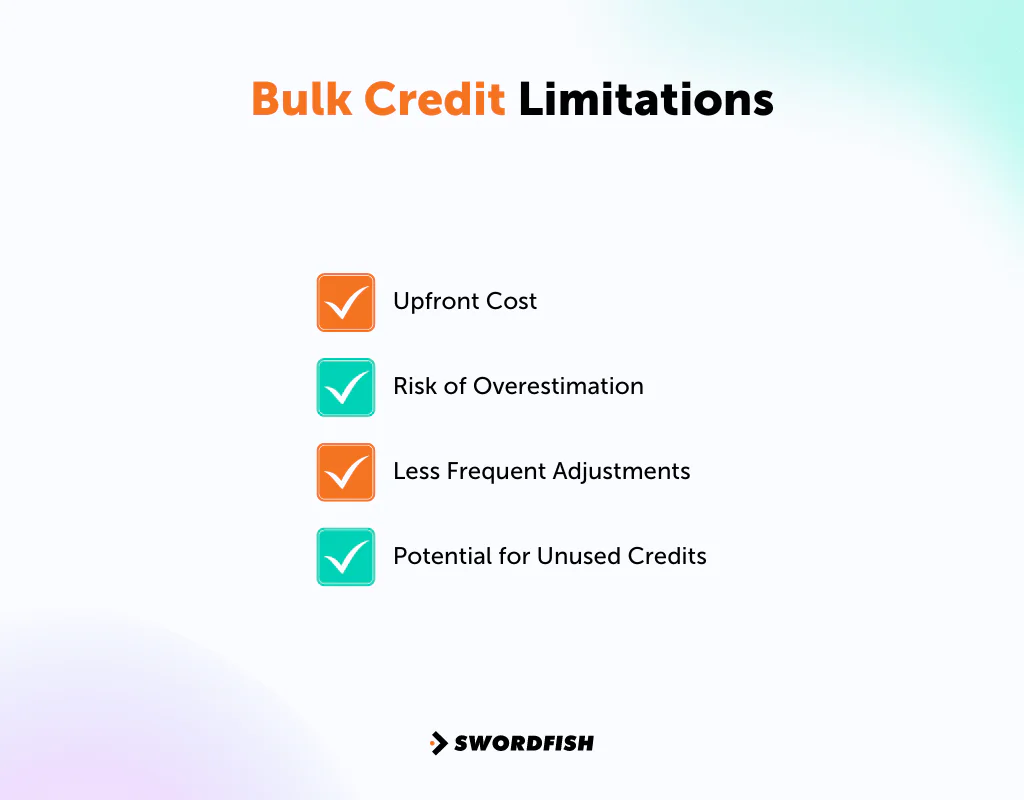
Upfront Cost
Buying bulk credits requires a higher initial investment compared to monthly subscriptions. This can pose a challenge for small businesses or startups with tight budgets. Although the long-term cost savings are attractive, the upfront expense demands careful financial planning to ensure it fits within your budget constraints.
Risk of Overestimation
There’s a chance of overbuying credits, leading to a surplus if your data needs are less than anticipated. This scenario necessitates accurate forecasting of your data usage, which can be difficult for new or expanding businesses.
Less Frequent Adjustments
Once you’ve purchased bulk credits, making adjustments based on fluctuating data needs can be less straightforward. If your requirements decrease, you might be left with more credits than necessary, unlike monthly plans that allow for easier scaling up or down.
Potential for Unused Credits
Some bulk credit packages come with an expiration date, posing a risk of losing any unused credits. Effective planning and regular monitoring of credit usage are essential to avoid this and ensure you fully utilize your investment.
How to Purchase and Manage Bulk Credits
Purchasing and managing bulk credits in ZoomInfo requires a strategic approach to maximize their value. By understanding the process and implementing effective management practices, you can optimize your data access and usage.

Review Your Data Needs
Start by evaluating your historical and projected data usage. Look back at previous projects, consider any upcoming campaigns, and factor in plans for market research. This will help you estimate the necessary number of credits, ensuring you select a bulk credit package that meets your requirements.
Contact ZoomInfo Sales
Get in touch with the ZoomInfo sales team via their website or phone. They can offer insights into various bulk credit packages, including details on pricing and special promotions. Their guidance can address your specific business needs, aiding in your decision-making process.
Plan Your Budget
Consider the upfront cost of bulk credits and how it fits into your budget. Although bulk credits can be more cost-effective in the long term, it’s important to ensure the upfront investment is manageable for your financial situation.
Implement Credit Tracking
Once you’ve purchased bulk credits, use ZoomInfo’s tools to track your credit usage. Regular monitoring will help you understand your consumption patterns, allowing you to adjust your data access strategy as needed. This way you use your credits efficiently throughout their validity period.
Schedule Regular Reviews
Set up periodic reviews of your credit usage and data needs. These reviews can help you identify if your current bulk credit package still suits your needs or if adjustments are required. Regular assessments guarantee that your data access strategy remains aligned with your business goals.
Managing Bulk Credit Consumption in Workflows
When utilizing Workflows within your organization, it’s essential to understand how credit consumption impacts your operations.
Here’s a breakdown of the key points and steps to manage these settings effectively –
- Credit Deduction: Each time a record is exported or updated through a Workflow, a credit is deducted from your organization’s Bulk Credits pool. This ensures that only necessary data manipulations consume your valuable credits.
- Credit Limits and Workflow Pausing: If any user hits their assigned credit limit, their ongoing Workflows will be paused. This pause remains until additional Bulk Credits are made available to them, ensuring that credit consumption is kept in check.
- 365-Day Rule: After credit is used for a record, your organization won’t be charged for any further exports or updates of that record for 365 days. This offers a grace period, allowing for repeated access to the same data without additional charges.
- Single Charge for Multiple Actions: In scenarios where a Workflow involves multiple actions for the same record, only one credit is charged. This efficiency gives certainty that credits are used judiciously, maximizing the value derived from each credit spent.
Steps to Manage Credit Consumption Settings:
- Accessing Credit Consumption Settings: Navigate to the Credit user consumption settings to control whether users involved in Workflows can surpass their Bulk Credit allocation.
- Default Settings for Admin Users: By default, admin users have the privilege to exceed their Bulk Credit limit. This setting can be adjusted based on your organizational needs and credit management strategies.
- Adjusting Bulk Credit Limits for Users: To review or modify the Bulk Credit limits for individual users:
- a. Click on “View user Bulk Credit limits.”
- b. Choose the users whose limits you wish to adjust.
- c. Use the “Actions > Manage Limit” option to either increase or decrease their Bulk Credit limits according to their needs and your credit allocation strategy.
Swordfish AI: A Superior Tool for Bulk Contact Data

Compared to ZoomInfo, Swordfish AI stands out by offering 33% more cell phone numbers and 45% more accurate cell phone numbers. This makes it a preferred choice for professionals seeking direct access to decision-makers.
Also, Swordfish AI is amazing for sales and recruitment professionals, trusted by over 50,000 users. It excels in providing accurate cell phone and email data, ensuring direct access to decision-makers.
With unique real-time validation, Swordfish AI guarantees the accuracy of contact information that increases booked meetings and revenue. Its suite of tools, including a Chrome Extension and Prospector, allows you to find and verify contact information across various platforms.
Therefore, Swordfish AI’s commitment to accuracy and efficiency makes it a powerful tool. It enables expanding sales flow and filling in CRM gaps with over 3.5 billion contact data profiles.
Features of Swordfish AI
Now let’s see the features of Swordfish AI:
-
Chrome Extension

This feature lets you find contact information for anyone online. It works with LinkedIn, Twitter, Facebook, and more. You get verified data easily.
-
Prospector
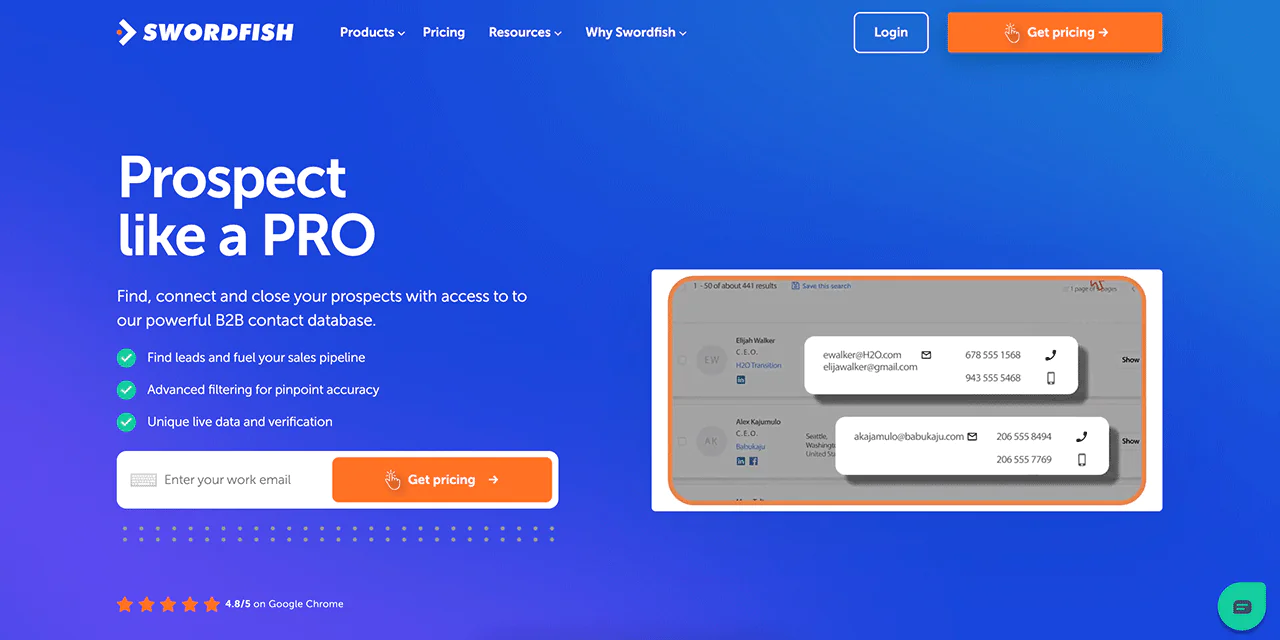
With this, you can quickly build targeted calling or email lists. It uses advanced filters for accurate lead generation, making your sales efforts more effective.
-
File Upload

This allows you to upload a CSV file and automatically fills in missing cell phone numbers and emails. It saves you time and improves your database.
-
Reverse Search
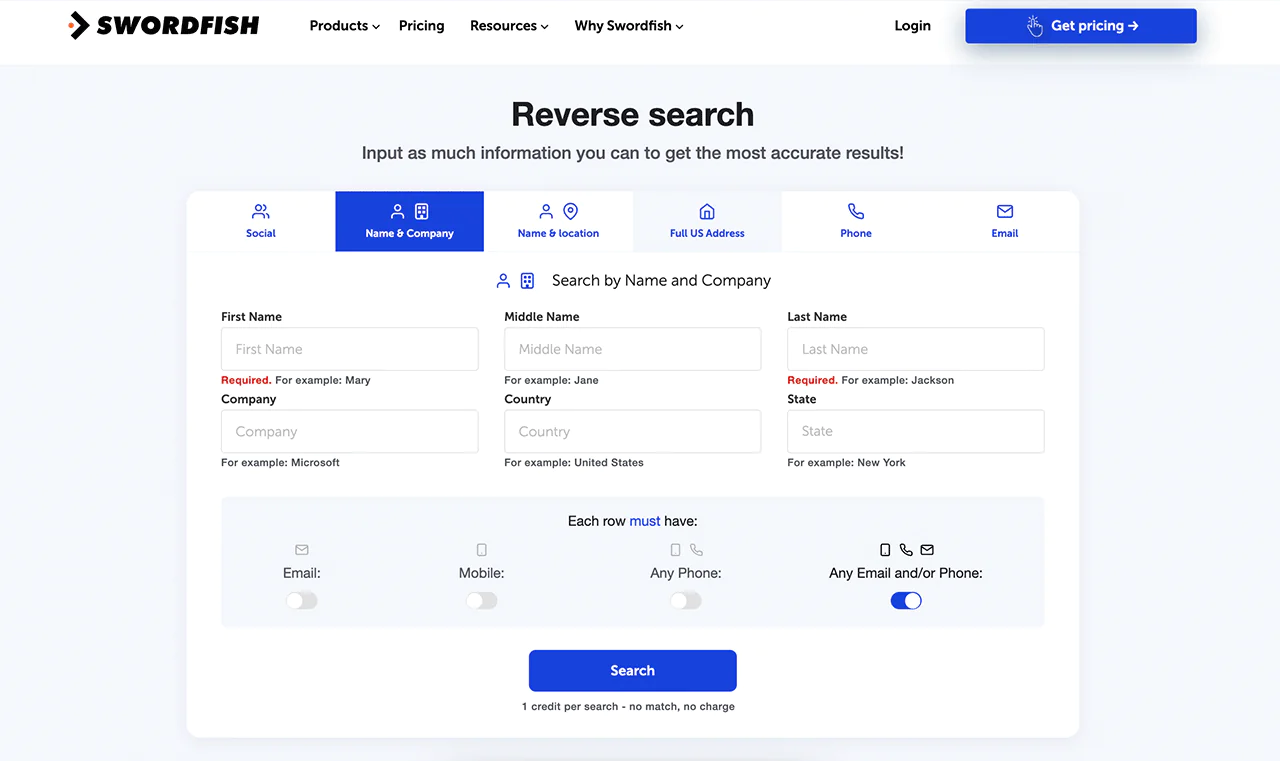
If you have some contact details, Swordfish AI can find the rest. With Reverse Search, one of our advanced search filters, it can find names, companies, emails, phones, and social profiles.
-
API Integration

Add Swordfish data to your applications at scale. It’s designed for developers who need reliable data for their software or services.
-
Bombora® Intent Data
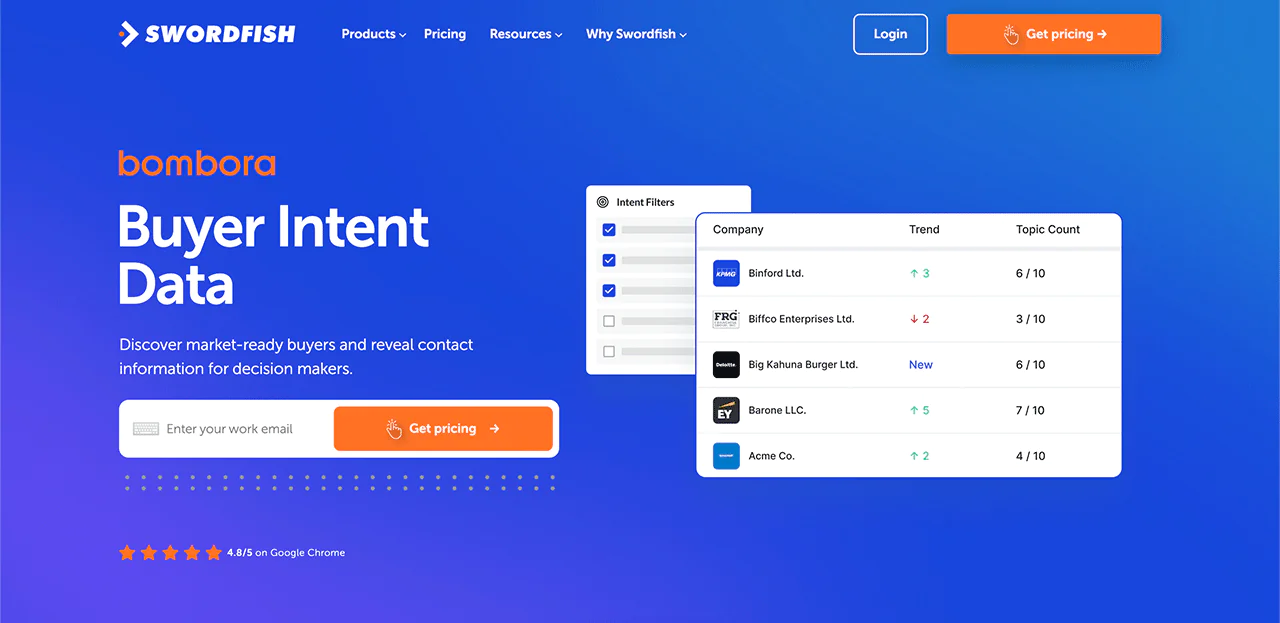
This feature helps you find businesses ready to buy your product. It uses buyer intent data to target potential customers more effectively.
Conclusion
ZoomInfo Bulk Credits is designed to meet the needs of companies engaging in extensive market research, lead generation, and targeted marketing initiatives.
By opting for bulk credits, organizations can enjoy cost savings while gaining the flexibility to use credits as their data needs fluctuate.
When considering ZoomInfo’s bulk credits, an important tip is to thoroughly assess your data needs and negotiate based on the volume of data you plan to access. This approach can help in securing a deal that aligns with your budget and data requirements.
For those seeking a more simplified platform with straightforward credit and pricing models, Swordfish AI is the best alternative. Its user-friendly approach to data access and management makes it an appealing option for businesses of all sizes.
FAQs
Do ZoomInfo bulk credits cover all data?
Bulk credits give access to most of ZoomInfo’s database, but some premium features can require additional subscriptions or specific credits. Check your plan for details.
How many ZoomInfo bulk credits do I need?
The number of credits needed depends on your outreach volume and data access requirements. Consider your campaign size and frequency to estimate the necessary credits.
What happens if I run out of ZoomInfo bulk credits?
If you run out, your ability to access data or perform certain actions will be limited. You can easily purchase more credits through your account to continue your activities.
What does ZoomInfo do?
ZoomInfo offers a platform for accessing detailed contact information and company profiles, aiding in customer research, targeted list creation, lead generation, and marketing research. It’s a tool for sales, marketing, and talent acquisition professionals to identify and connect with potential leads.

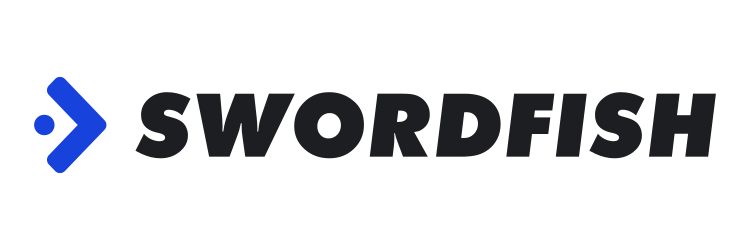
 View Products
View Products


